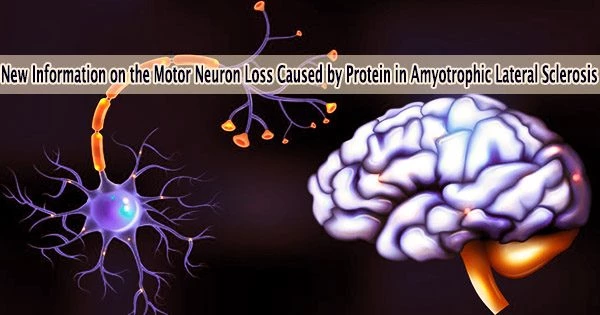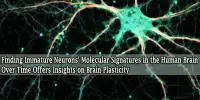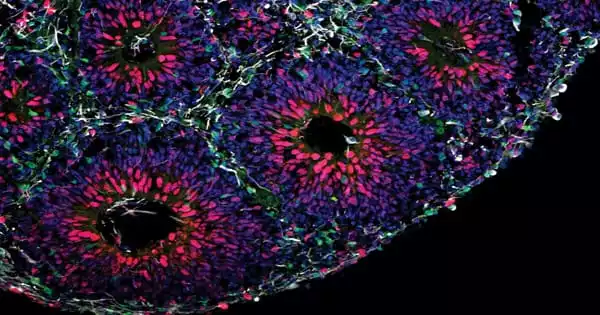Numerous neurological connections between the brain and spinal cord regulate our motions. Specifically, the cerebral cortex’s neurons transmit instructions to the spinal cord’s motor neurons, which subsequently communicate with the muscles to cause the desired movement.
However, amyotrophic lateral sclerosis (ALS), a common progressive neurological illness in which the muscles gradually deteriorate and make breathing and movement challenging, disrupts this flow of brain information.
Moreover, a protein called TDP-43 has been found to abnormally accumulate in the neurons affected by ALS, leading to the degeneration of these neurons and motor dysfunction.
The symptoms of motor dysfunction in ALS patients typically start in one area of the body, like the limbs, and then spread to other areas. Further evidence points to the idea that degeneration originates in one kind of motor neuron and then spreads to other motor-related neurons.
Previous research has highlighted the association between ALS and the buildup of TDP-43 in motor neurons. Given these seemingly disparate but related findings, researchers from the Brain Research Institute at Niigata University couldn’t help but ask: Could TDP-43 be responsible for propagating degeneration in ALS?
The scientists created ALS animal models that preferentially accumulate TDP-43 in the skeletal muscles, spinal motor neurons, or cortical motor neurons to answer this question. They then looked at how some motor neurons’ TDP-43 starts the disease spreading to other motor-related neurons. Their study was published in Acta Neuropathologica on August 9, 2023.
Elucidating the mechanisms of TDP-43 spreading and other pathological events of propagation will lead to the development of a novel therapeutic approach to prevent disease progression in ALS.
Dr. Shintaro Tsuboguchi
“TDP-43 accumulation is seen in most of the patients with ALS, but there has been a long-standing debate on whether it propagates through the motor pathway and causes disease progression,” says senior author Dr. Osamu Onodera, professor at the Department of Neurology, Brain Research Institute at Niigata University.
The scientists discovered that TDP-43, when generated in the cortical neurons of the mice models for ALS, led to mild degeneration. They also discovered that TDP-43 was transmitted to oligodendrocytes, non-neuronal cells that support neurons by encasing axons in a protective covering called myelin to promote neuronal signal transmission, along with the axons.
TDP-43, on the other hand, was activated in the spinal motor neurons, and it did not spread to the other cortical or spinal neurons, instead causing widespread cell death in the motor neurons as well as other nearby neurons in the spinal cord. In addition, it led to severe atrophy of the muscles, which further led to motor dysfunction.
Regarding their findings, co-senior author Dr. Masaki Ueno, a professor in the same institute, says, Our findings suggest that pathogenic TDP-43 has multiple properties to propagate degeneration in the motor pathways in ALS, probably by spreading itself and inducing other toxic events such as degeneration and inflammation.”
Their findings show that TDP-43 has unique mechanisms for degeneration in the motor circuits of ALS because TDP-43 distributes across neuroglial connections in the motor pathway and causes several pathogenic processes to degenerate the spinal cord.
“Elucidating the mechanisms of TDP-43 spreading and other pathological events of propagation will lead to the development of a novel therapeutic approach to prevent disease progression in ALS,” concludes first author Dr. Shintaro Tsuboguchi, an assistant professor at the same institute.
The findings of this study will pave the way for the effective treatment of ALS, offering hope to many patients with ALS worldwide.
The study “TDP-43 differentially propagates to induce antero and retrograde degeneration in the corticospinal circuits in mouse focal ALS models” was co-authored by Shintaro Tsuboguchi, Yuka Nakamura, Tomohiko Ishihara, Taisuke Kato, Tokiharu Sato, Akihide Koyama, Hideki Mori, Yuka Koike, Osamu Onodera, Masaki Ueno, all at the Brain Research Institute, Niigata University in Japan.
The Japan Society supported the research for the Promotion of Science, Japan Agency for Medical Research and Development, Tsubaki Neurology grant, and Japan ALS Association.
















